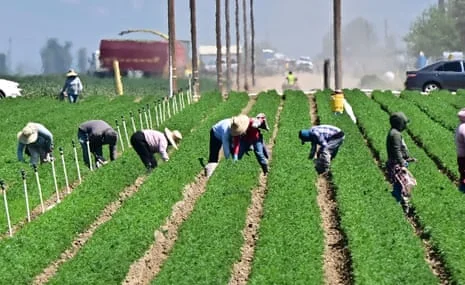
Tariff Turmoil: California’s $59 Billion Agriculture Industry Faces Uncertain Future Amid Trump Trade Policies
California’s powerful farming sector is at a crossroads as President Donald Trump’s trade tariffs reignite global economic tensions, leaving the state’s $59 billion agriculture industry anxious and vulnerable. With new U.S. tariffs targeting major partners like China and Canada, and tit-for-tat retaliations on quintessential California exports from almonds to citrus, the stakes for the state—and the families that keep its fields running—have rarely been higher.
The latest tariffs were meant to protect U.S. workers and reduce trade deficits, but for the agriculture heartland of California, the reality has been jarring uncertainty and economic whiplash. Farmers and industry officials warn of ripple effects that could squeeze profit margins, shift global markets, and threaten the viability of America’s largest farming state.

Christine Gemperle, an almond farmer in Ceres, reflected the stress at the grassroots: “It’s scary. Nobody wants to be in the center of chaos.” She and her brother tend 135 acres of almond orchards themselves, and have not turned a profit for four years due to low prices and now, escalating trade headwinds. “At this point, I’m on the verge of losing everything,” she confides. “I just wonder if going through this is just going to seal the deal on killing small family farms.”

Her fears are echoed by Bianca Kaprielian, co-CEO of Creekside Organics in Reedley, whose citrus exports to Canada are drying up. “If we start losing those export markets, that means we’re going to have an influx of supply on the domestic market,” she said, worried about falling prices and rising input costs. “Is there going to be enough money going back to the farm to make it all work to keep farming again the next year?”

This uncertainty is compounded by longstanding issues: water constraints, labor shortages, and dwindling support systems. During the last major tariff standoff in 2018, California nut growers lost much of the Chinese market to Australia—losses that still linger. Colin Carter, UC Davis professor emeritus and agricultural economist, warns that with this renewed cycle, “it could be worse. A new trade war could cost $6 billion per year and wipe out one-quarter of California’s agricultural exports.”
For an industry that exports nearly $24 billion globally, these shocks threaten more than just profits—they jeopardize entire livelihoods and food supply chains. Meanwhile, most federal relief previously flowed to Midwestern growers, leaving many California farmers feeling abandoned. “California’s farmers were largely left out of the government compensation schemes,” Carter’s analysis notes.

Despite the challenges, many have not condemned White House policy outright—hoping for campaign promises around water, yet grappling with the fallout. Amid shifting demand, labor shortages, environmental rules, and now global trade feuds, the uncertainty itself may be the most destabilizing element. As Secretary of Food and Agriculture Karen Ross put it, “The more uncertain things are, the harder it is to just do business.”
With every round of new tariffs, California’s future as the nation’s breadbasket grows more precarious. Officials and growers are now waiting—some hopeful, many fearful—for the dust to settle. Will negotiations save the valley, or is a painful restructuring of global agriculture underway?
What’s your view on the future of California’s farming under current trade policies? Leave a comment below and share your perspective.